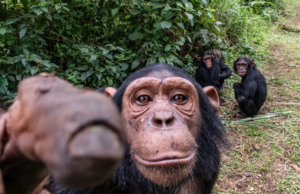The first 20 days of Cecilia

The 20-year-old chimpanzee Cecília arrived on April 5 at the Great Apes Sanctuary of Sorocaba, affiliated to GAP Project, after two days of a journey that began in Mendoza, Argentina, where she had been living alone in a cement cage in the city’s zoo and exposed to the public.
Cecilia’s story would have been one more of a great primate rescued from ill-treatment and taken to a sanctuary to live with her peers if it was not for the landmark that her transference represents: she was the first chimpanzee in the world to be released from a situation of inadequate captivity by the legal remedy of the Habeas Corpus, an instrument generally used only for human persons. Cecilia is the first nonhuman person to have a chance to fully enjoy the right of freedom in a sanctuary. And this achievement was celebrated worldwide.
Pablo Buompadre, president of the Association of Lawyers and Professionals for Animal Rights (AFADA), the organization in Argentina that conducted the Habeas Corpus case, says that Cecilia’s case put down the wall that existed between the laws of humans and non- human rights, which defined that animals as having no rights.
“Judge Alejandra Mauricio demonstrated with this courageous decision that the interpretation of the law is dynamic, not static, that it must adapt to the social changes of historical development, since it is not a question of giving rights of animals possessed by human beings , but to accept and understand, once and for all, that they are sentient living beings, who are subjects of rights, “says Pablo, who will go to the Brazilian sanctuary on the 29th to see Cecilia in her new home.
Today, 20 days after her arrival at the sanctuary, Cecilia is fortunately doing very well. Gradually adapting to new life, which means stepping on the grass, having space to run, having the opportunity to live with other chimpanzees and not be forced to be exposed as an object of visitation and entertainment.
“The sanctuary team must have a lot of attention and patience because Cecilia has lived all her life in a concrete cage, a few meters from the public and the reality that she has experienced is very limited. She is afraid of the noise of engines and tractors, for example, and is afraid to be taken back to her old captivity, “explains Dr. Pedro Ynterian, general secretary of GAP Project International and owner of the Sanctuary of Sorocaba. “Now, in the early days, we want her to get to know and trust the sanctuary humans – veterinarians and caretakers – and we are also enriching her food with more protein items.”
Jaqueline B. Ramos
Communication Manager GAP Project International
Check out images of the transfer of the first days of Cecilia in the sanctuary:





 Español
Español
 Português
Português








